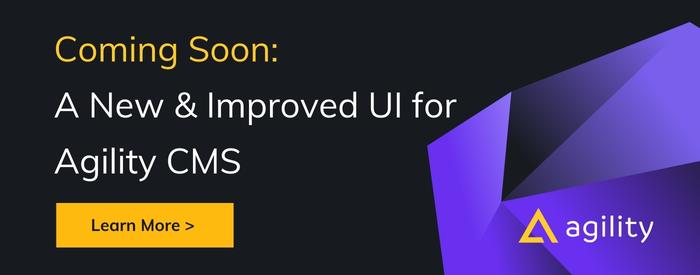5 Ways APIs can benefit developers
Why dev teams LOVE APIs- or should learn to


API stands for Application Programming Interface. That's a piece of software that allows two or more apps to connect. It delivers your request to one application and gets the response back to the originating app. It's an interface that allows two apps to communicate with each other safely and securely with the help of simple commands.
As a developer, you don't always have to begin from scratch when you code. APIs enable you to create your code using pre-existing software so you can focus on the unique value proposition of your new program. An API is a standard way for devices to access and use available infrastructure.
Imagine you want to use your computer. Generally speaking, most of us would plug it into a power outlet to connect with the electric power company's network. You typically never create the infrastructure for a portable generator to charge a computer.
In the same way, APIs help you use an existing network and use the software deemed fit for a program.
What is API integration?
API integrations allow companies and developers to automate tasks, integrate databases with industry applications, and provide all the benefits of cloud-based apps while improving product innovation. Whether you want to develop a website builder, an email marketing tool, a hosted PBX, or some billing software, APIs can help you in many ways.
APIs allow businesses to launch initiatives effectively without spending money or time.
How Can APIs help your business?
As far as companies are concerned, with APIs, they can create solutions for better customer experiences and improve UX without significantly adding to the development costs. APIs help streamlines business operations in ways few other tools can. An API-first CMS can also empower teams to create enterprise-grade experiences.
Things to Keep in Mind when Developing APIs
Perspective
API development is different in a sense you're designing things for programmers. You don't know who they are, but they all have the technical know-how to point out flaws in your API design. Your users are going to be similarly critical of your API. They love finding out flaws.
As an API designer, you focus on the service or what the provider wants. API users are focused on something slightly different. They want to know how to use the API to get/do what they need. They want to spend little effort to get the most out of the API in as little time as possible.
These are two different questions, and they naturally result in different perspectives. As a result, designing a great API means you need to think from the view of the API users than the API designer's view.
These different questions lead to two vastly different perspectives. Because of that, the biggest thing to focus on when designing a new API is to think of it as a user than a designer. This is only possible if you continually ask yourselves questions about the user requests and make those answers part of your API.
Only rarely do APIs are designed in a way to appeal to users.
Documentation
Almost everyone I know hates documentation. It's complex and tedious. But stop right there and think of your users for a second. You'll immediately begin to realize how convenient it is for users to use a documented API rather than an undocumented API. Think of documentation as a project to manage.
The thing is, if you want people to use your API, documentation is essential. You need to get this right because it's the first thing people see, like opening a parcel.
Present this well, and once you do, even if the API is hard to use, people will give it a try.
What's the secret to excellent documentation?
The easy part is documenting API methods like sample requests and their responses. This is followed by creating descriptions of each element.
Different software tools can help you with documentation. Or you can do this manually by talking about API endpoints and their functions and generating documentation for you.
What's different from excellent documentation is the addition of examples or full-fledged tutorials. Providing complete API documentation is equivalent to providing customers with a great customer support tool.
This helps users understand your API well and tells them where to start.
Use technical language to list classes, methods, and responses to APIs, but don't explain what the API is meant to do for them in a simple language. You will find it challenging to discover the information on their own and use the API. No one wants to go through a list of classes or methods with little explanation of what they do.
Write tutorials that help get developers running with the app quickly. Point them in the right direction, and offer fully detailed and documented functionality to expand on what's already there.
Once you're finished with the documentation, validate it so that it makes sense to anyone who reads it. Do this: Send it to other developers. Always gather product feedback.
Stability and Consistency
If you used a big company like Facebook's API, you must have noticed the number of times they completely rewrite their APIs. It's not a developer-friendly API.
But, most sites aren't as big as Facebook. They don't have that much market share. So you need something more stable. You need to keep API versions running and supported. Here are a few tips for that.
Let's say the API URL is
Let's say, for example, that your API is accessible via the URL http://myapisite.com/api/widgets
This provides a JSON format response.
If you need to modify the JSON response, then every app integrated with this will break.
So do this. Include a version number
http://myapisite.com/api/widgets?ver=1
http://myapisite.com/api/widgets/ver=2
And so on.
People using version 1 can upgrade to later versions when they're ready for it. They're not shocked into upgrading themselves.
A good URL scheme will make significant revisions, but the format and supported data types will be communicated in advance.
Five Potential Benefits of Using APIs for Developers
1. Reduce Development Time
The most significant benefit of using APIs is synchronizing them across different development changes. This reduces development time. Different APIS available on the market make it possible for mobile apps to communicate with companies outside. Developers need more time to sign-in modules and authenticate clients in portable apps.
They use APIs, Facebook APIs, or other login APIs.
API integrations make it easy for designers
And also for any end users. They don't require embedding sign-in credentials with everything else being the same. They can always use Google or other social media sign-in options. Storage APIs and another place where they are great. You can build storage for mobile apps. You can use the Google Drive API or Dropbox APIs to store client details, which is excellent for gaming applications.
APIs simplify implementing new applications, business models, and digital products. They allow you to complement what you currently do with third-party products or services while improving their development. For that reason, many developers and entrepreneurs are willing to pay for access to APIs.
You can integrate applications for automating a large part of its strategies with the help of API. Integrations let you automate most manual tasks making transitions smooth between different applications. This way, you can save time and effort in your business.
Computers do the work instead of people, making things easy for us.
With API access, publishing things quickly is easy because you get faster data access.
Custom APIs help you make sense of the changing systems and adapt to them quickly. It helps you create cloud-friendly applications easily because the apps are developed with connectivity on top of your mind. The APIs connect to the application's internal services and other services in the cloud. Since you pay developers by the hours billed, reducing development time also reduces startup costs. Your startup will be a lean, clean machine.
2. Coding is Less Time Intensive
Add a programming interface inside application development to shorten the development cycle by reducing the amount of coding required and the time spent on coding. Application engineers don't need to code every feature and component; a program may require thanks to APIs.
APIs make it easy for firms to create a similar level of functionality. Creating an app like Google Maps from scratch will be extremely time-consuming. Thanks to geolocation APIs, developers can integrate this functionality into their app without needing to code Google Maps on their own.
An API allows different platforms, applications, and systems to connect on a shared platform and carry out multiple tasks.
You can use software meant for a specific task inside another.
APIs allow you to integrate different software according to your business's specific needs. This way, your company can provide better results. You can extend the integration of the applications with third parties to improve functionality and provide better usability.
3. Makes you More Creative
Different APIs are available today, all offering their own set of features. Due to the time required, most developers try reducing functionalities. Innovation is pushed to the back burner as a result. However, API-powered features that are otherwise hard to create and configure can increase your creativity and reduce the time needed to do things.
You can use the Youtube API to integrate web videos into the site without creating a component on their one. These details contribute to creating a much better application.
APIs are essential to digital transformation and the creation and development of innovative business models. They are the basis of application economics, which can be developed faster, better, and at a lower cost.
APIs allow the software to complement itself with third-party products or services. This makes development easier. A good API helps further develop your brand presence.
When you use a mobile application, it sends and gets data over the internet from a remote server.
The application on receiving data from the server decodes the same, performs essential steps, and returns it to your phone. The program analyzes the data and presents the same to us in a human-readable manner.
API development and integration involve exchanging messages and similar data with applications like Twitter, Facebook, and Instagram. For example, different mobile apps on your smartphone can connect and send data over the internet.
4. Simpler Codebase
The more refined a portable application is, the more its features and capabilities are. Even a simple feature needs a high level of coding. The more complex the element, the more lengthy the code for it. APIs help you relieve this and assist designers in adding both complex and critical features in app development.
Engineers don't need to create from scratch every single feature. They can choose to patch already created pieces. This makes the codebase easy to use and still easier to understand.
API strategies help you reduce costs. Rather than reinventing the wheel with an update, API allows developers to improve existing work, speeds up the time to production, and keeps development costs in check.
APIs help developers customize interfaces to a company's needs.
With the use of APIs, developers can create great digital experiences for customers and employees. Collect data, personalize services and add desired capabilities.
APIs allow apps to work in close harmony.
Entrepreneurs don't like eCommerce niches because they often feel it's too technical. With existing APIs, all you need to do is use them. The ease of integrating APIs means you can start an online business without any real effort.
With API, you can sell on sites like Amazon without the need to code an Amazon store from scratch.
APIs are a result of continuous innovation and hard work. They achieved this status in business, and developers applied this. With the opportunity given by APIs, developers can create new solutions and improve productivity.
Here are five ways in which APIs can help developers:
5. Modular CI/CD development
Modular development helps you avoid incompatibilities between the API and its application.
CI stands for continuous integration and focuses on the early stages of software development, where code is written and undergoes initial testing. Many developers work on the codebase together and make commits to the repository.
These frequent builds make it possible to conduct easy and low-risk experiments and roll back changes if they are deemed necessary.
CI uses a variety of tools to create these builds.
Continuous Delivery or CD is the other side of the coin. It focuses on later development changes where the entire build is tested, validated, and delivered for deployment.
Both these stages are assisted with the help of APIs.
APIs are a Developer's BFF
APIs reduce development time to a large degree. They simplify your codebase and help you add novel functionality while making it easy for the development team.
You're more creative as a result. CI/CD development is now far more accessible. What do you think?

About the Author
George is a writer and blogger and has been working in the SaaS and online marketing industry for the past 12 years.




